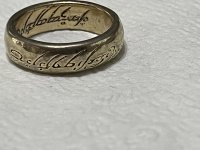- Thread starter
- #61
My Father-in-law has not had the opportunity to pan out the ore sample I dropped off last week, but promised me he would get to it this week for sure.
My criteria for confirming gold is that two people have to identify it as such. For instance, I have panned a few streams out and found "gold", but I really do not count it as it has not had a second party...a second person think it is gold too. I just do not have enough confidence in myself to say if it has it or not.
My criteria for confirming gold is that two people have to identify it as such. For instance, I have panned a few streams out and found "gold", but I really do not count it as it has not had a second party...a second person think it is gold too. I just do not have enough confidence in myself to say if it has it or not.







